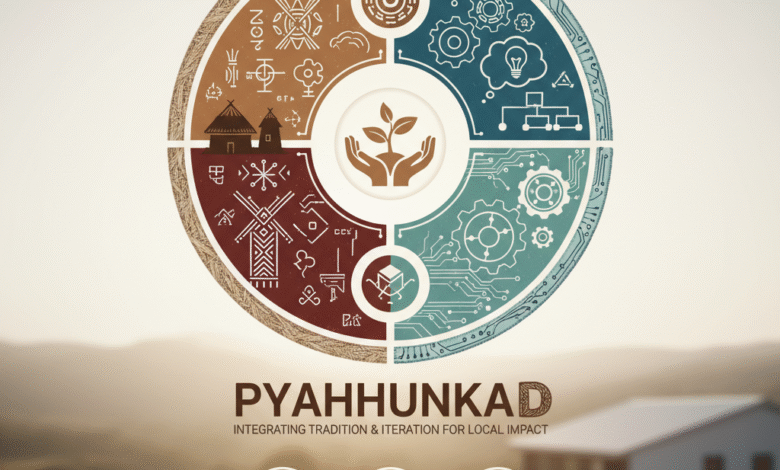Pyahhunkad: Small Steps, Big Change in 2025

Pyahhunkad is a small idea with big uses. It blends old ways of thinking with simple, repeatable experiments. People use it both as a cultural idea and as a practical way to solve local problems. This article explains the basics in plain words. We will stop halfway so the next part can pick up cleanly.
Many sources in 2025 treat pyahhunkad as both a cultural value and a hands-on method. Some write about its meaning and role in community life. Others write step-by-step guides for projects and groups. Taken together, these views show that pyahhunkad is useful for people who want change that fits local life.
What is pyahhunkad?
At its core, pyahhunkad asks two questions: what matters here, and how can we try small changes to learn? It is not a single rule book. It is a way to listen, test, and learn. The idea mixes respect for local stories with a habit of testing small actions and then learning from the results.
You can think of pyahhunkad in two ways. First, as a cultural idea that helps people feel connected and steady. Second, as a practical method for making things better. Both sides feed each other. The cultural side keeps the work rooted. The practical side keeps the work useful.
Core principles
Pyahhunkad rests on three simple principles. The first is respect for local narrative. This means starting by listening. It means learning what people already know and value.
The second is small experiments. Instead of big plans that can fail, try tiny steps. These give fast answers. The third is open feedback. Share what you learn. Use that feedback to change your next step. Together, these three ideas make pyahhunkad flexible and grounded.
Why pyahhunkad matters (key benefits)
One clear benefit is better fit with local needs. When you start by listening, your work matches what people care about. That lowers waste. It also builds trust. People join in when they see their views matter.
Another benefit is speed. Small tests give quick learning. You do not wait years to find out if something works. You learn fast and change fast. This helps in schools, small businesses, and community projects. Pyahhunkad also helps teams avoid solving the wrong problem.
A short story to make it real
Think of a village school that wants more kids to come to class. A big plan could cost a lot and take years. The school tries a small test first. They change the school noticeboard and ask parents what time works best for drop-off. They try a short pilot on two days.
The change is small. It shows what works and what does not. Parents feel heard. Attendance rises a little. The school learns what to do next. This small test is a simple example of pyahhunkad in action.
How to start with pyahhunkad
First, listen. Talk to the people who will use or live with the change. Ask simple, open questions. Write down short notes. Do not assume you know the full story.
Second, design a tiny test. Keep it cheap and quick. Pick one clear thing to try. Run it for a short time. Third, collect feedback. Ask people what they saw and felt. Use that feedback to change the test or try a new one. These steps are small but powerful when repeated.
How to measure results
A big question is, how do you know if pyahhunkad is working? The answer is to keep it simple. Look for clear signs of change. Did more people show up? Did the task take less time? Did the community feel happier? These small signs are the best way to measure results.
Numbers can help, but stories matter too. If a parent says, “Now it’s easier to send my child to school,” that is real proof. Both numbers and stories show the effect. With pyahhunkad, you do not need heavy reports. You only need honest signs that life is a little better.
Common challenges
No method is perfect. Pyahhunkad has its own challenges. Some people may not believe in small steps. They may ask for big changes right away. Others may not want to share open feedback. Some groups may also feel pressure to copy big projects instead of local tests.
Another challenge is time. Small steps take patience. You must be ready to learn and adjust again and again. This can feel slow in a world that wants fast results. But if you trust the process, pyahhunkad pays off in the long run.
How to scale pyahhunkad
Scaling means growing an idea without losing what makes it special. With pyahhunkad, scaling is not about copying the same project everywhere. It is about spreading the way of working.
For example, one town may test new ways to keep streets clean. Another town may test new ways to support small shops. The steps are different, but the method is the same. The goal is to keep the spirit of pyahhunkad alive, not to copy one single plan.
Keeping it real
It is easy for methods to turn into buzzwords. To keep pyahhunkad real, you must focus on people. Ask yourself: are we truly listening? Are we testing in small, fair ways? Are we sharing what we learn? If the answer is yes, then you are doing it right.
The strength of pyahhunkad is that it grows with people, not away from them. If you remember this, it will not become just another word. It will stay a living, useful tool for change.
Final thoughts
Pyahhunkad is simple but powerful. It shows that small steps, honest listening, and open feedback can bring real change. It is both a cultural value and a practical method. In 2025, when life is moving fast and change feels hard, this simple approach gives hope.
You do not need to be an expert to use it. You only need to listen, try small things, and learn as you go. That is the heart of pyahhunkad. Maybe the best way to remember it is this: big change starts with small steps. And small steps, done with care, can change a whole community.



